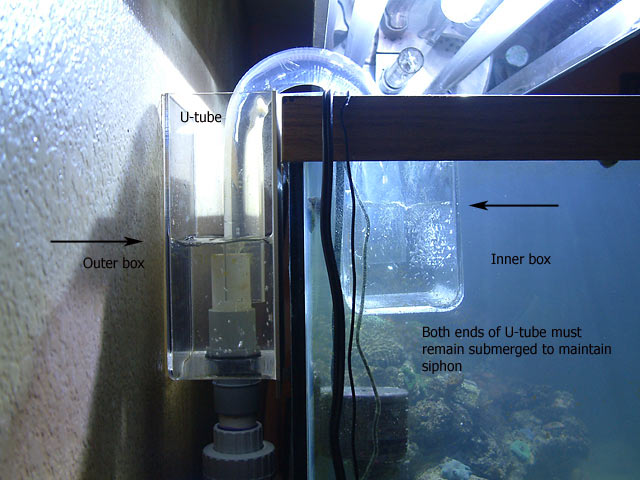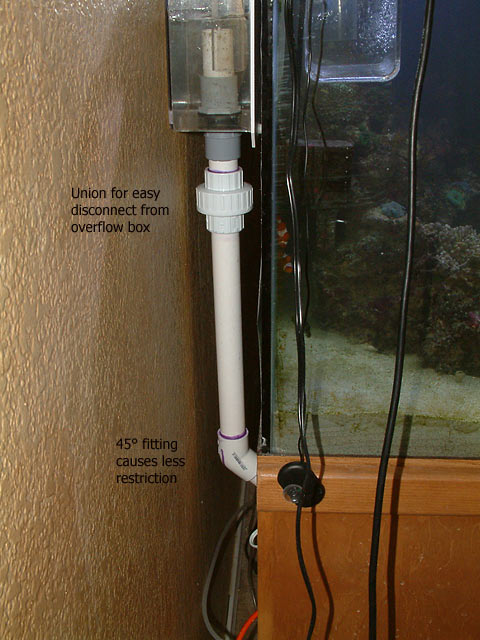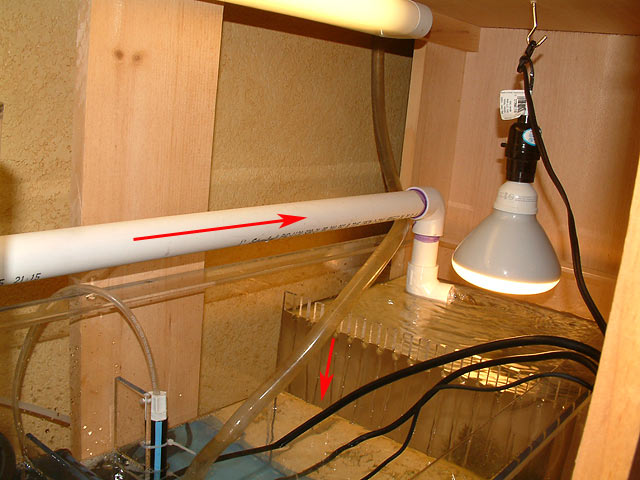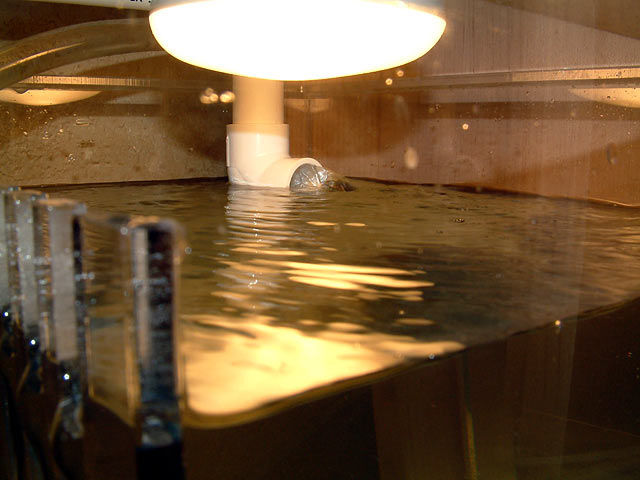I'm putting the finishing touches on my new sump/'fuge.
The setup is a skimmer section on one side with the 'fuge on the opposite with the return chamber in the center.
My question is how best to get water to the fuge.
1) T off on the return line to divert (with a ball valve) a low flow to the 'fuge, or
2) Branch off the overflow line to divert some water to the 'fuge with the majority going to the skimmer section
Is there really any benfit doing it one way vs another?
Or is it just a matter of what fits my plumbing best?
[Timezone Detection]
Create Account - Join in Seconds!
Hybrid View
-
01-25-2007, 09:20 PM #1
 'Fuge Plumbing Question
'Fuge Plumbing Question
-
01-25-2007, 09:24 PM #2

I would go off of your return line because a ball valve t'd off the return always helps adjust flow anyhow, also you get the benifit of all your overflow water going thru the skimmer section and therefor increase your chances of catching the protiens in the skimmer.
Does water always taste like salt and poo????
-
01-25-2007, 09:54 PM #3

I would go with Option 2 myself (sorry Joe). The fuge will benefit from the raw over flow more. If you had to close off the T on on the return line to get the right return pressure, your fuge would be starved for water. The best of both world would be to devert (sp?) the overflow line as the major fuge feed and the then have the return shunt dump in there too.
-
01-25-2007, 10:47 PM #4

I do like the idea of both, but I think that if you had a pump that was obviously larger than your overflow then the return would be the way to go but if at all possible I think that shads idea would work. I would just put a ball valve in the overflow line also to prevent too much water from ripping thru there.
Does water always taste like salt and poo????
-
01-26-2007, 07:53 AM #5

Thanks guys.
I take that advice and go that route. It's probably easier to fit the plumbing that way as well.
No problem putting a ball valve on the line to the 'fuge either.
-
01-26-2007, 11:28 AM #6

Dumb question? Whay is the return pump in the middle?
-
01-26-2007, 05:36 PM #7

The idea in the 'fuge being on the outside with the return in the middle is to allow for a slower flow through the 'fuge than the rest of the sump. Now I currently don't have a real big flow through it anyway, but with a larger return pump/overflow that'll change, but I can still keep a lower flow moving through the 'fuge.
Learned this from Melev....
-
01-28-2007, 04:59 PM #8

bdgr, I'm currently doing nearly the exact same sump/fuge/plumbing as this. fuge feed off of the overflow w/ a ballvalve and the pvc going to the fuge is also a reduced size.
-
01-29-2007, 01:43 AM #9

Need some pictures?






If you want all the rest of the images and documentation, it is on this page: http://www.melevsreef.com/install_sump.html
-
01-29-2007, 09:00 PM #10

One follow up ?. I'm looking at getting a new overflow box that would be rated at about 1200GPH. If my current return pump is only going to get me about 800GPH with the head loss, will that still balance out?
It seams to me that even though it is capable (with 1 1/2" bulkhead) of 1200GPH, that if the tank is only refilling at 800GPH, then that is all the faster it'll drain.
Is that an accurate analysis?
Similar Topics
-
question on sump return plumbing
By jstan in forum DIY Projects & PlansReplies: 8Last Post: 01-03-2013, 07:46 PM -
Lighting/ T5 Fuge/Sump/Frag area Lighting Question
By EMUreef in forum HardwareReplies: 14Last Post: 08-28-2010, 05:09 PM -
Plumbing 101 help!
By Iconz in forum DIY Projects & PlansReplies: 18Last Post: 12-15-2006, 02:14 PM -
NEED HELP WITH PLUMBING!!!
By jojo22 in forum DIY Projects & PlansReplies: 6Last Post: 10-13-2006, 08:49 PM -
Flow & Plumbing plumbing
By sirpat in forum HardwareReplies: 7Last Post: 10-06-2004, 11:06 AM


 Reply With Quote
Reply With Quote




